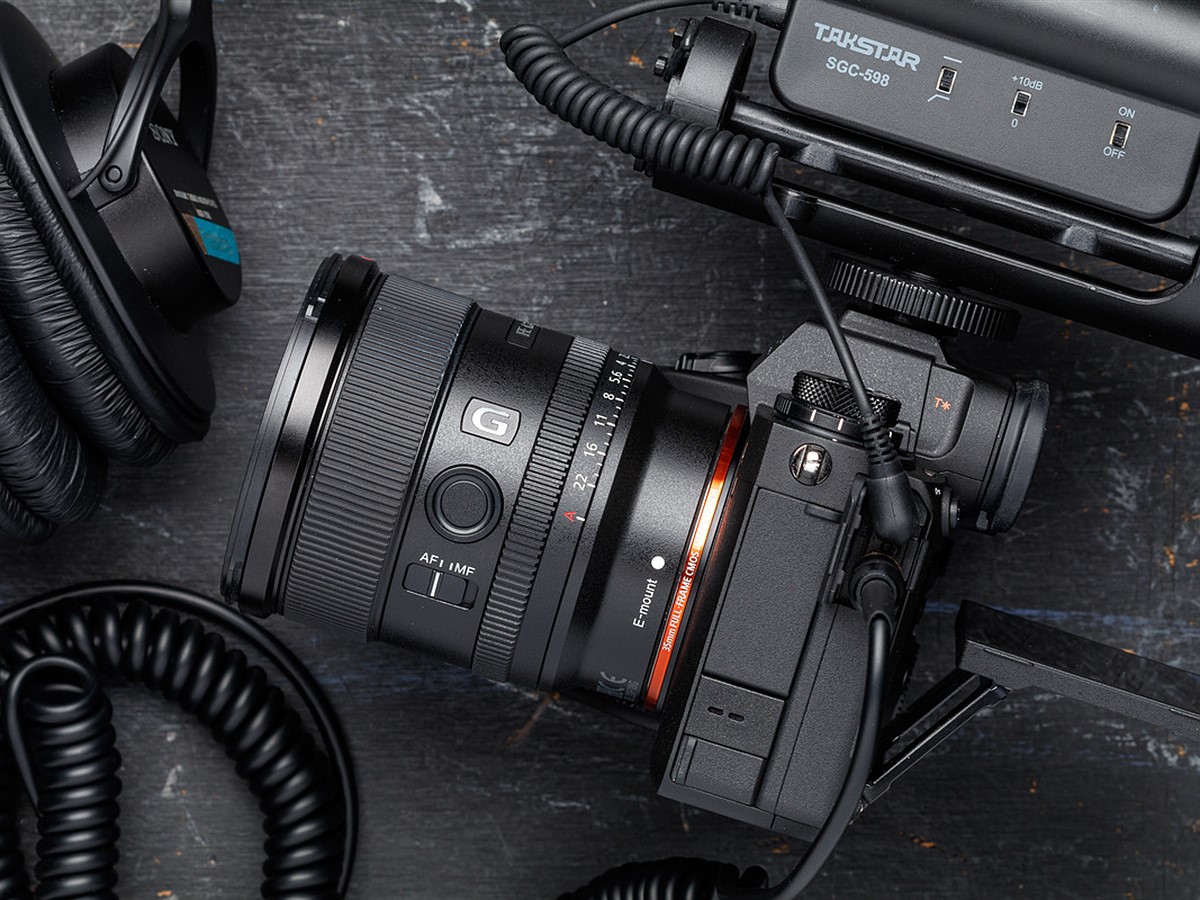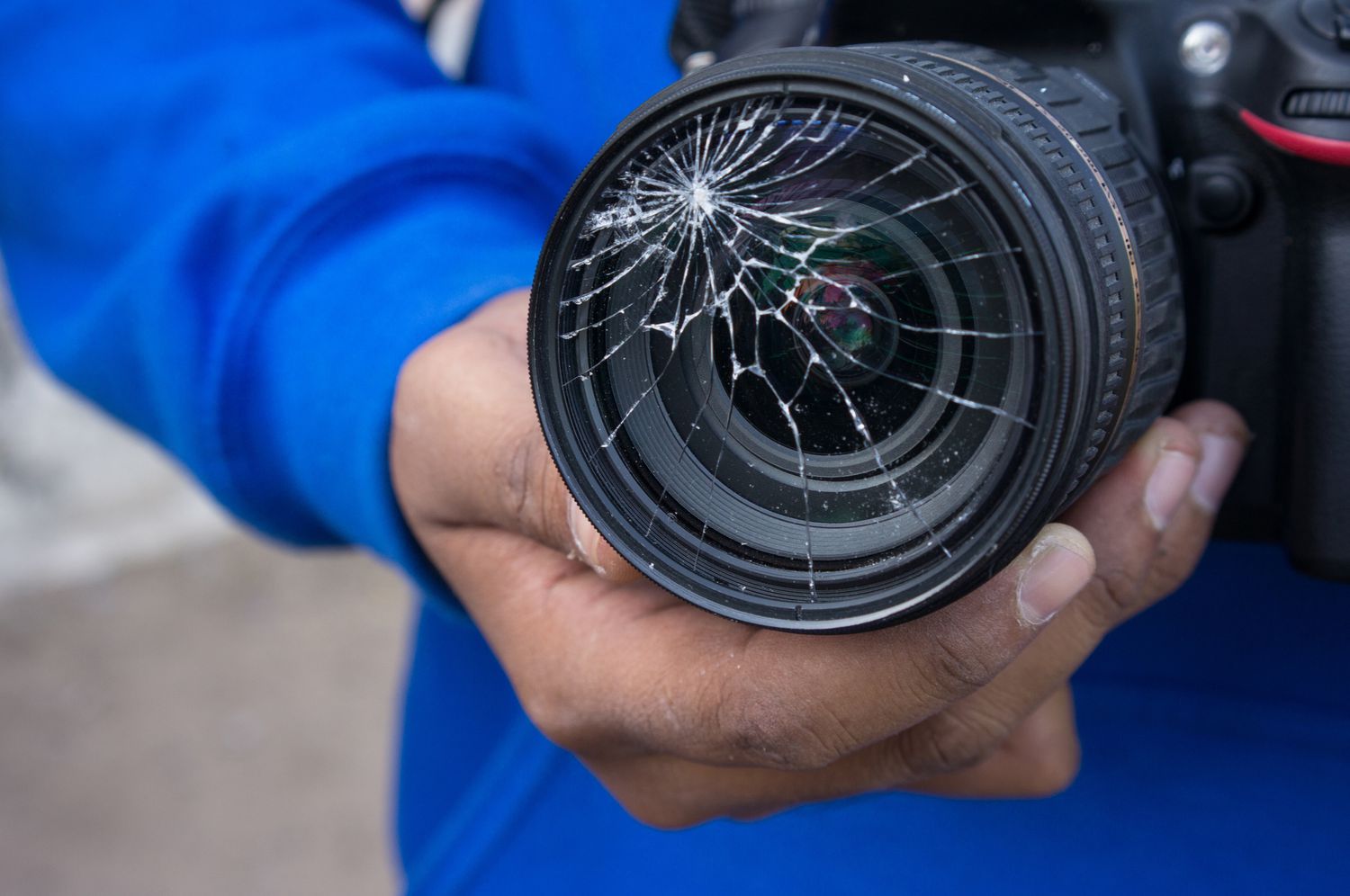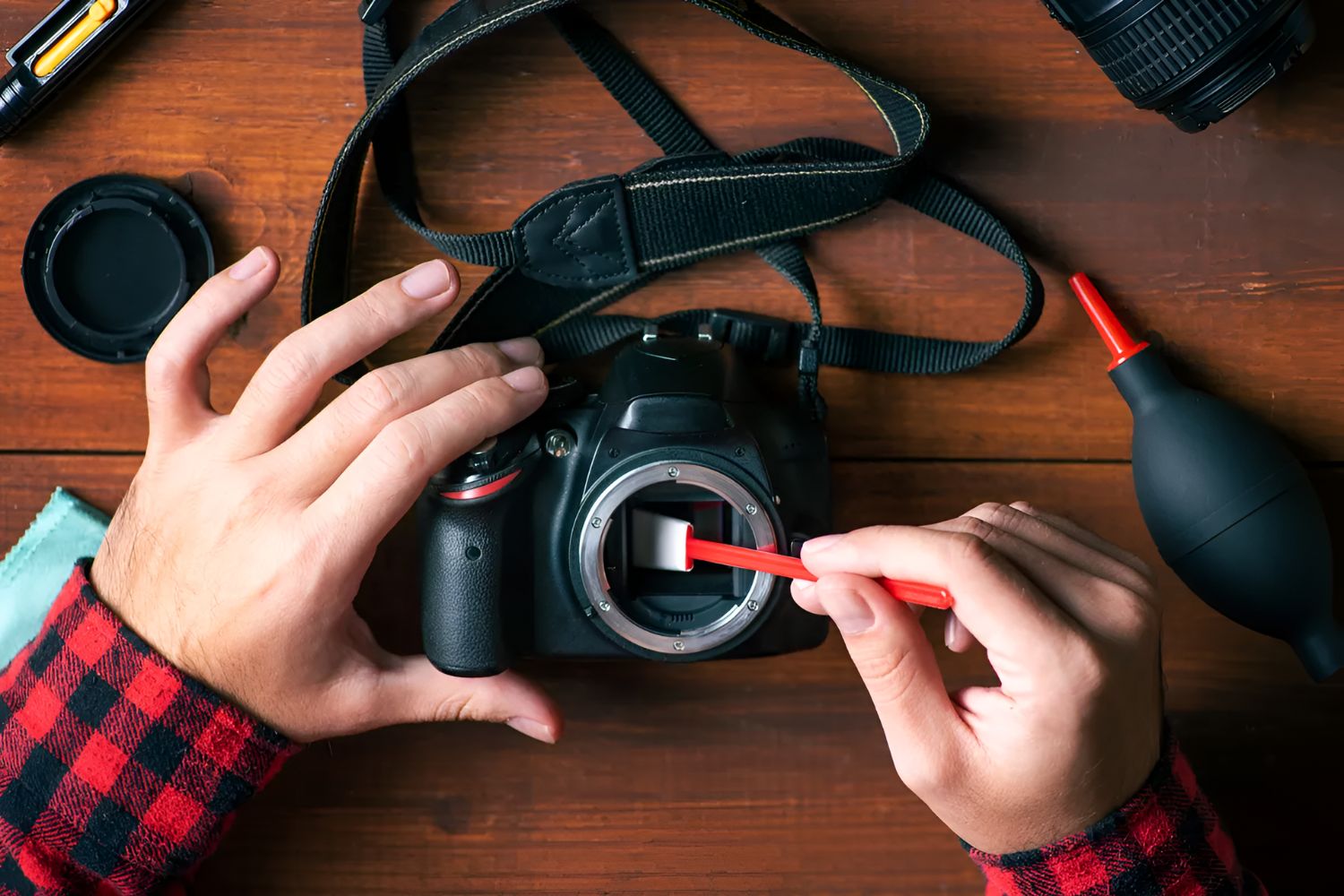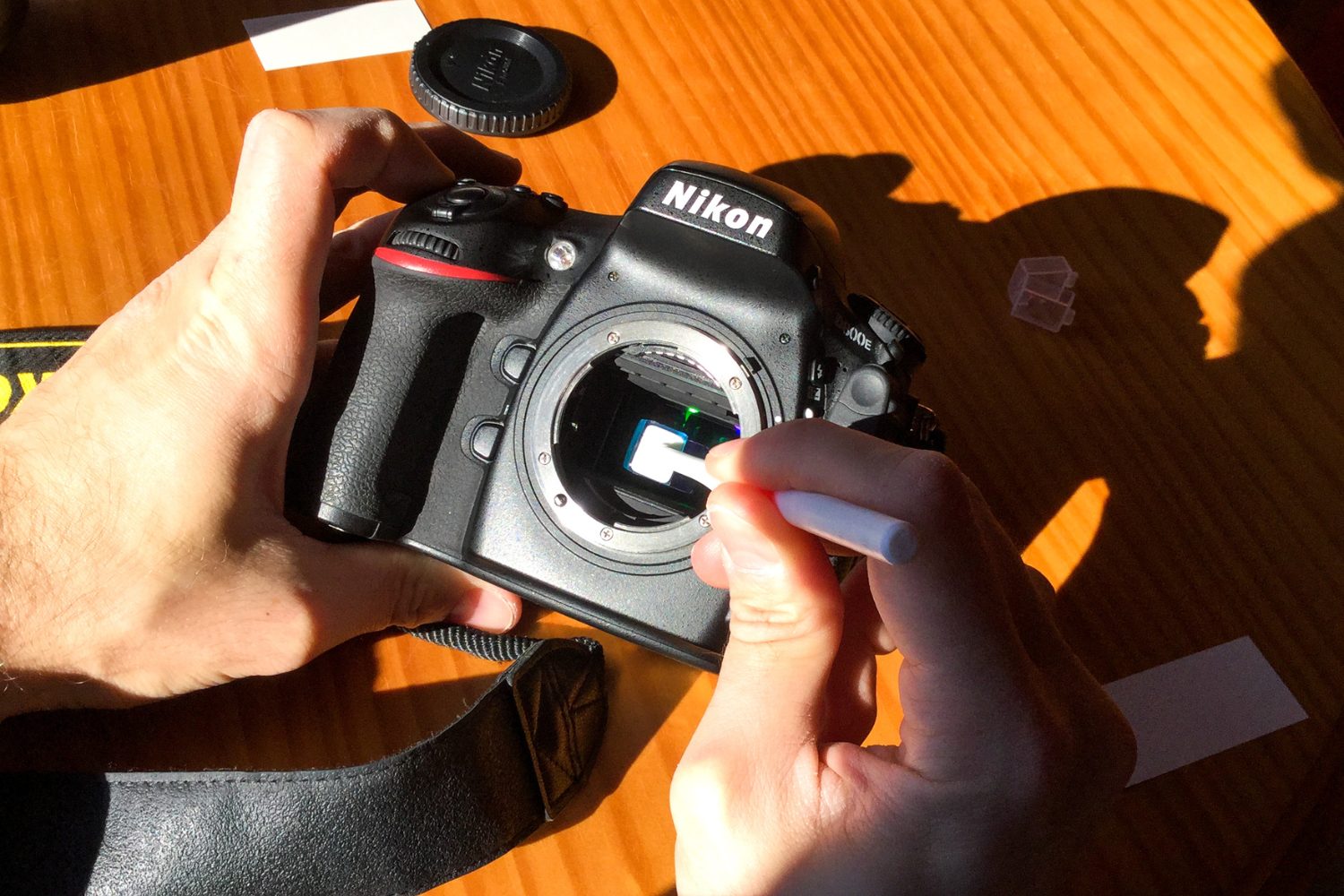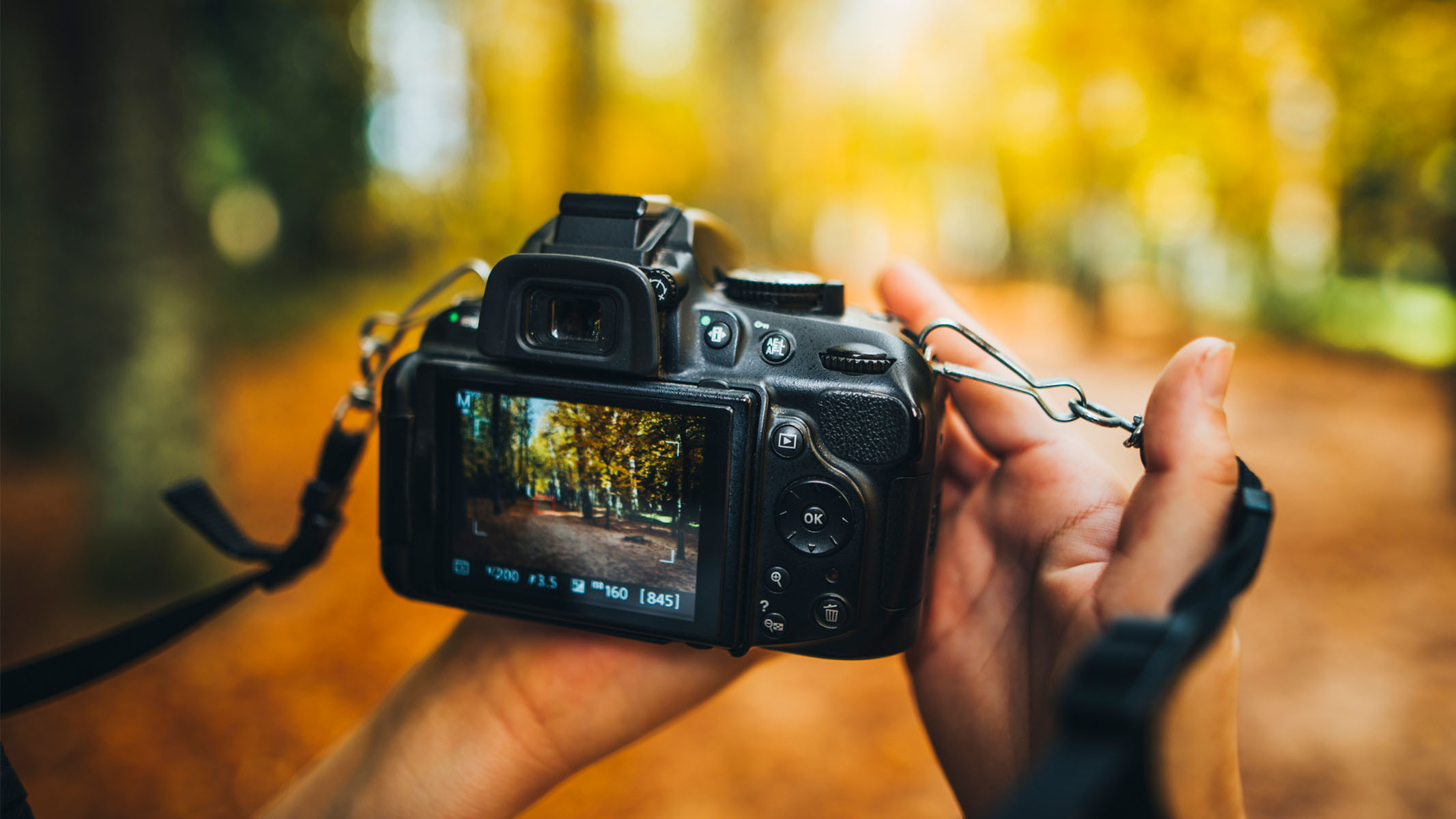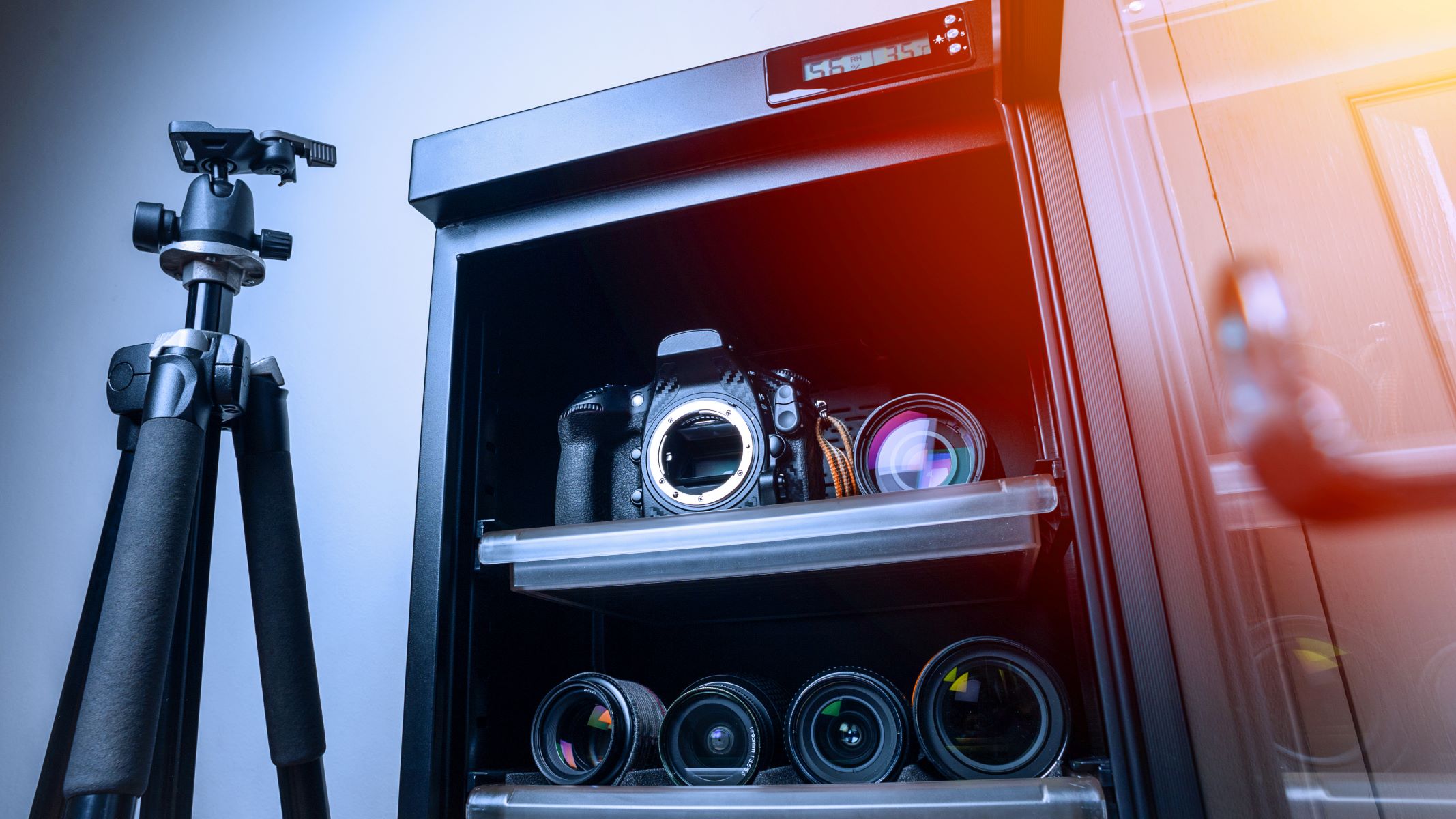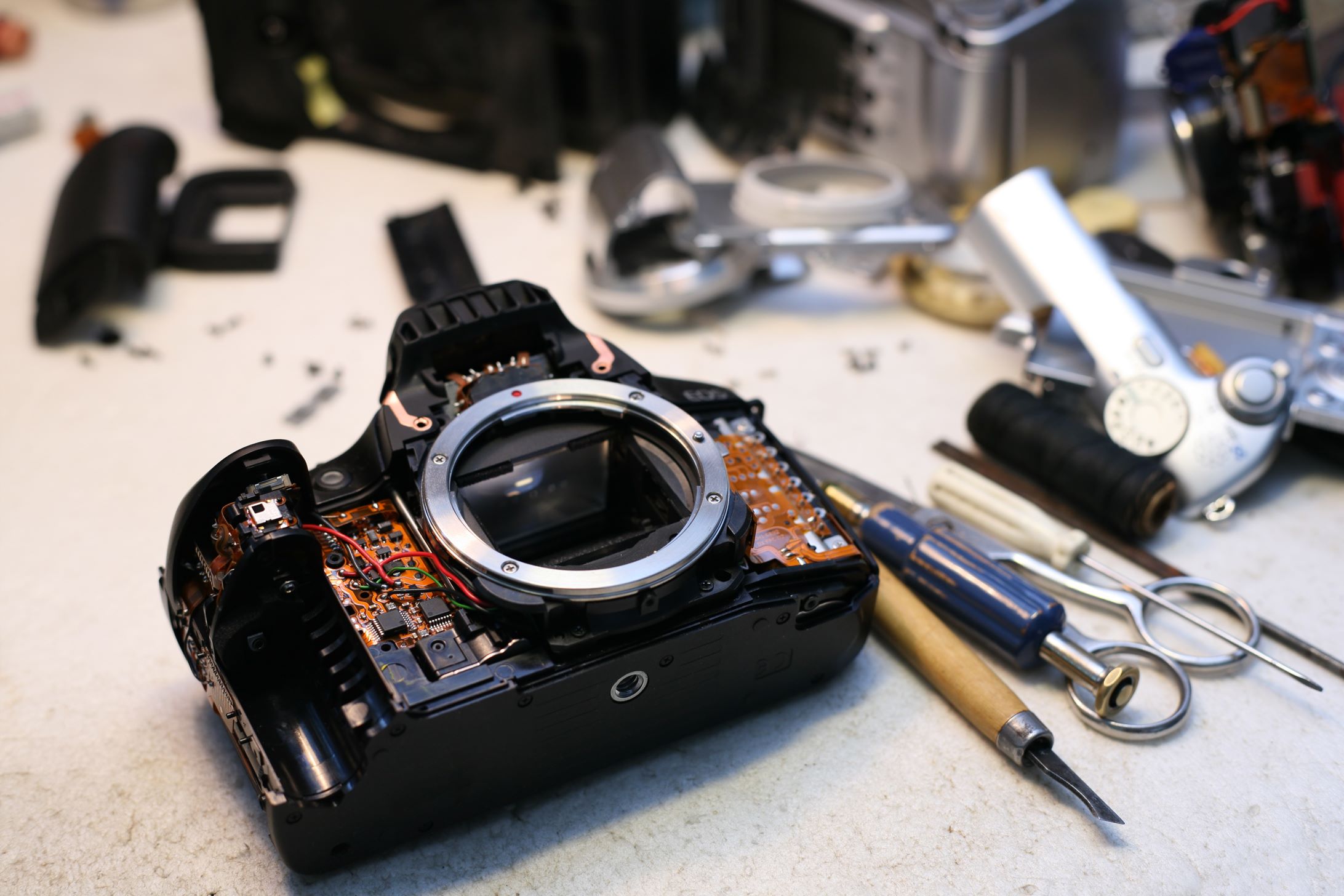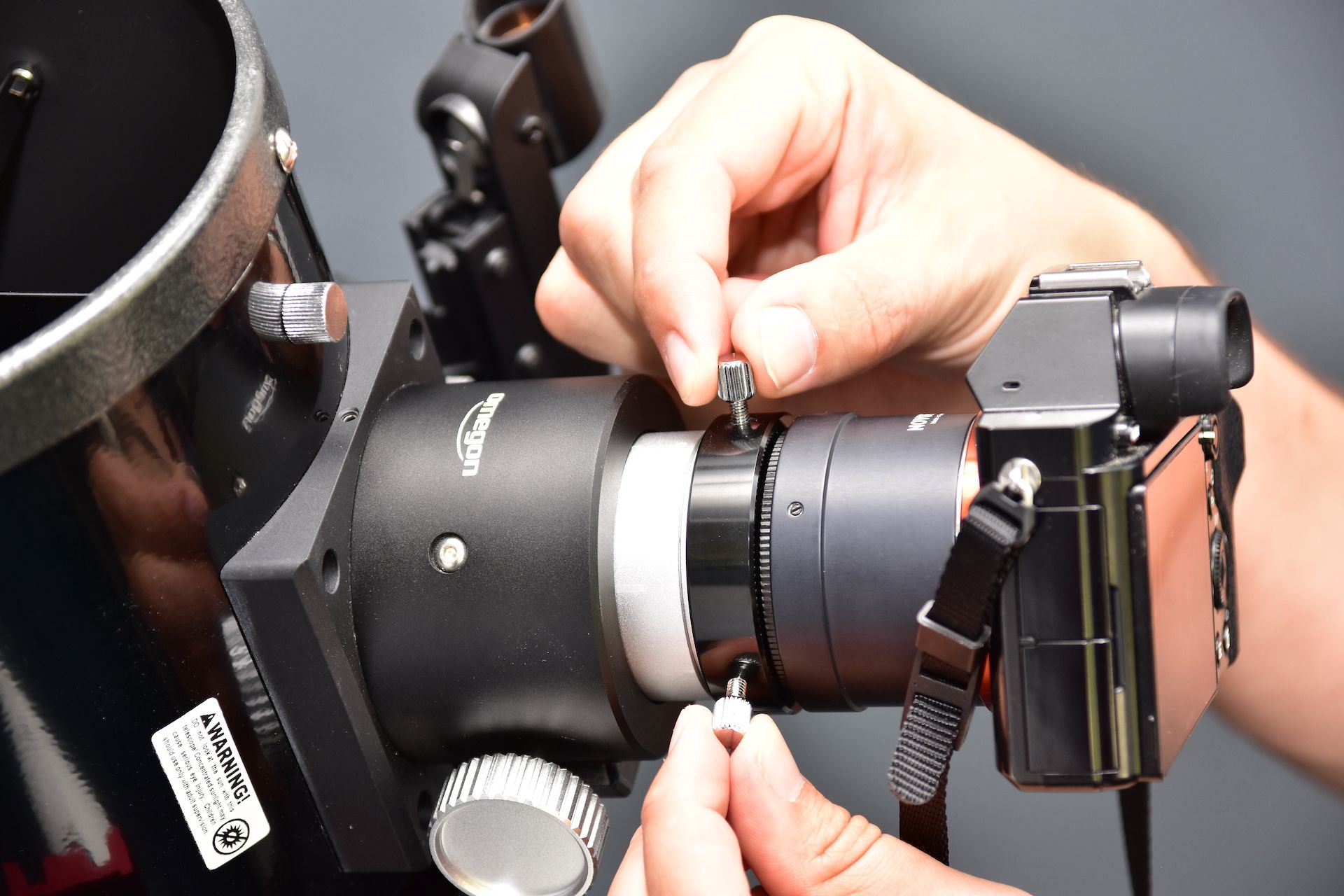Introduction
Welcome to the world of digital photography! Owning a DSLR camera is an exciting venture that opens up a realm of creative possibilities. However, to ensure that your camera continues to deliver stunning images, it’s crucial to understand how to properly care for and maintain it. By implementing a few simple practices, you can extend the life of your DSLR camera and keep it in optimal working condition.
Whether you’re a photography enthusiast or a professional, taking care of your DSLR camera is essential for preserving its functionality and performance. This comprehensive guide will walk you through the best practices for cleaning, handling, and maintaining your camera, as well as safeguarding it from potential damage. From cleaning the camera body and lens to ensuring proper battery and memory card care, we’ll cover all the necessary steps to keep your DSLR camera in top-notch shape.
By following these maintenance tips, you can protect your investment and continue capturing breathtaking moments with your DSLR camera for years to come. Let’s delve into the essential care and maintenance practices that will help you get the most out of your beloved camera.
Cleaning the Camera Body
Keeping the exterior of your DSLR camera clean is vital for its longevity and performance. Dust, dirt, and grime can accumulate on the body, affecting the functionality and aesthetic appeal of the device. Here’s how you can effectively clean the camera body:
- Gentle Wiping: Use a soft, dry microfiber cloth to gently wipe the exterior surfaces of the camera body. This will help remove dust and smudges without causing any scratches.
- Compressed Air: For hard-to-reach areas and crevices, utilize a can of compressed air to dislodge dust particles. Ensure that the nozzle is held at a safe distance from the camera to prevent any damage.
- Cleaning Solution: If there are stubborn marks or fingerprints, dampen a portion of the microfiber cloth with a small amount of camera-specific cleaning solution. Carefully wipe the affected areas, ensuring that no moisture seeps into the camera’s internal components.
- Careful Handling: When cleaning the camera body, exercise caution and avoid applying excessive pressure or using abrasive materials that could scratch the surfaces.
Regularly maintaining the cleanliness of the camera body not only enhances its appearance but also safeguards it from potential damage caused by foreign particles. By incorporating these cleaning practices into your routine, you can ensure that your DSLR camera remains in pristine condition, ready to capture stunning images at a moment’s notice.
Cleaning the Lens
The lens is a critical component of your DSLR camera, and keeping it clean is essential for producing sharp, high-quality images. Here’s how you can effectively clean the lens:
- Use a Blower: Prior to using any cleaning tools, use a blower brush to remove loose dust and debris from the lens surface. This minimizes the risk of scratching the lens during the cleaning process.
- Lens Cleaning Pen: Gently use a lens cleaning pen with a retractable brush on one end and a soft cleaning pad on the other to remove smudges and fingerprints. This tool is specifically designed for lens cleaning and is safe to use on delicate surfaces.
- Lens Cleaning Solution: If stubborn marks persist, apply a small amount of lens cleaning solution to a microfiber cloth designed for lens cleaning. Carefully wipe the lens in a circular motion, starting from the center and moving outward, to ensure even cleaning without leaving streaks.
- Inspect for Residue: After cleaning, inspect the lens under proper lighting to ensure that no residue or streaks are left behind. If necessary, repeat the cleaning process to achieve a pristine, clear lens surface.
Regularly cleaning your lens not only ensures optimal image quality but also prolongs the lifespan of the lens. By incorporating these cleaning practices into your camera maintenance routine, you can capture stunning, crystal-clear images with your DSLR camera, allowing your creativity to shine through every shot.
Handling and Storage
Proper handling and storage of your DSLR camera are crucial for maintaining its functionality and protecting it from damage. Here are essential tips for handling and storing your camera:
- Secure Camera Straps: Always use the camera straps provided or invest in a reliable camera strap to secure your camera when in use. This minimizes the risk of accidental drops and damage.
- Protective Carrying: When transporting your camera, use a well-padded camera bag or case to shield it from impacts and environmental elements. Ensure that the bag provides a snug fit to prevent the camera from shifting during movement.
- Proper Lens Cap Usage: Keep the lens cap on when the camera is not in use to protect the lens from dust, scratches, and fingerprints. This simple practice can significantly extend the life of your lens.
- Temperature and Humidity: Avoid exposing your camera to extreme temperatures and high humidity, as these conditions can adversely affect its performance and longevity. Store the camera in a dry, cool environment when not in use.
- Avoiding Impact: Be mindful of where you place your camera, ensuring it is not within reach of children or at risk of being knocked over. Additionally, avoid placing heavy objects on top of the camera when storing it.
By adhering to these handling and storage practices, you can safeguard your DSLR camera from accidental damage and environmental factors, ensuring that it remains in optimal condition for years to come. These simple yet effective measures contribute to the longevity and performance of your beloved camera, allowing you to focus on capturing exceptional images without worry.
Battery Care
Proper care and maintenance of your DSLR camera’s battery are essential for ensuring uninterrupted photography sessions and maximizing the battery’s lifespan. Here’s how you can effectively manage and care for your camera’s battery:
- Use Genuine Batteries: Always use genuine, manufacturer-recommended batteries for your DSLR camera. Generic or off-brand batteries may not provide the same level of performance and could potentially damage your camera.
- Charge and Discharge: To maintain the battery’s performance, it’s advisable to fully charge and then fully discharge it at least once every few weeks. This practice helps prevent the battery from developing a memory effect, which can reduce its overall capacity.
- Storage: When not in use, store the battery in a cool, dry place at room temperature. Avoid exposing it to extreme heat or cold, as this can degrade the battery’s performance and lifespan.
- Proper Charging: Use the provided charger or a compatible, high-quality charger to recharge the battery. Avoid overcharging or using incompatible chargers, as this can lead to battery damage and potential safety hazards.
- Monitor Battery Levels: Regularly check the battery level indicator on your camera and recharge the battery before it becomes completely depleted. Allowing the battery to fully discharge frequently can reduce its overall lifespan.
By following these battery care practices, you can ensure that your DSLR camera’s battery remains reliable and long-lasting, providing the power needed to capture countless memorable moments. Proper battery care not only enhances your photography experience but also contributes to the overall longevity and performance of your camera.
Memory Card Care
Proper care and maintenance of your DSLR camera’s memory card are essential for safeguarding your valuable photographs and ensuring the consistent performance of your camera. Here’s how you can effectively manage and care for your memory card:
- Formatting in the Camera: It is advisable to format the memory card in the camera rather than on a computer. This ensures that the card is optimized for your specific camera model and reduces the risk of compatibility issues.
- Handling and Insertion: When handling the memory card, avoid touching the gold contacts or exposing it to static electricity. Additionally, insert and remove the memory card carefully to prevent damage to the card or the camera’s card slot.
- Storage: Store the memory card in a protective case or sleeve when not in use to shield it from dust, moisture, and physical damage. Keep the card in a cool, dry place to maintain its integrity and performance.
- Regular Backups: Create a habit of regularly backing up your photographs from the memory card to a secure storage device or cloud service. This practice ensures that your precious images are protected in the event of card failure or loss.
- Scanning for Errors: Periodically scan the memory card for errors using your camera’s built-in diagnostic tools or a reliable computer-based scanning program. Address any detected issues promptly to prevent data loss or corruption.
By implementing these memory card care practices, you can maintain the reliability and integrity of your photographs while prolonging the lifespan of your memory card. Consistent care and attention to your memory card contribute to a seamless photography experience, allowing you to focus on capturing remarkable moments without concerns about data integrity or storage issues.
Using a Camera Bag
A high-quality camera bag is an indispensable accessory for any DSLR camera owner, providing essential protection and organization for your valuable equipment. Here’s how you can maximize the benefits of using a camera bag:
- Equipment Organization: Invest in a camera bag with customizable compartments and dividers to keep your camera body, lenses, and accessories well-organized and secure. This facilitates easy access to your gear and minimizes the risk of damage from shifting during transport.
- Padding and Protection: Choose a camera bag with ample padding and cushioning to safeguard your equipment from impacts and jolts. Ensure that the bag provides a snug fit for your gear to prevent unnecessary movement during transit.
- Weather Resistance: Opt for a camera bag constructed from durable, weather-resistant materials to shield your equipment from environmental elements such as rain, dust, and extreme temperatures. This is especially important when shooting in outdoor or challenging conditions.
- Comfort and Portability: Select a camera bag with comfortable, adjustable straps or handles for easy carrying during extended photo outings. The bag should distribute the weight evenly to reduce strain on your shoulders and back.
- Additional Features: Look for extra features such as exterior pockets for storing small accessories, tripod attachments, and quick-access compartments for frequently used items like memory cards and lens caps.
By utilizing a well-designed camera bag, you can protect your DSLR camera and accessories while staying organized and prepared for any photographic opportunity. The right camera bag not only enhances the safety and convenience of transporting your gear but also complements your photography experience, allowing you to focus on capturing stunning images without worrying about equipment protection.
Protecting the Camera from Extreme Conditions
Photographers often encounter various environmental challenges, and protecting your DSLR camera from extreme conditions is crucial for its longevity and performance. Here are essential tips for safeguarding your camera in challenging environments:
- Rain and Moisture: When shooting in wet conditions, use a rain cover or protective sleeve to shield your camera from moisture. Additionally, consider investing in a weather-sealed camera body and lenses for added protection.
- Extreme Temperatures: In extremely hot or cold environments, acclimate your camera gradually to prevent condensation or thermal shock. Avoid leaving the camera exposed to direct sunlight for extended periods, and use a camera bag with insulation in extreme cold.
- Dust and Sand: When shooting in dusty or sandy environments, minimize lens changes to prevent debris from entering the camera body. Use a protective filter on your lens to shield it from airborne particles.
- High Altitudes: At high altitudes, be mindful of the impact of reduced air pressure on your camera’s functionality. Familiarize yourself with the camera’s altitude limitations and consider using a protective case to mitigate potential pressure-related issues.
- Humidity and Salt Air: In humid or coastal areas, use silica gel packets in your camera bag to absorb moisture and prevent condensation. Wipe down your camera and lenses with a dry cloth after exposure to salt air to prevent corrosion.
By taking proactive measures to protect your camera from extreme conditions, you can ensure its resilience and reliability in diverse shooting environments. These precautions not only safeguard your equipment but also empower you to explore and capture extraordinary images in challenging conditions, knowing that your camera is well-protected.
Regular Maintenance
Regular maintenance is vital for preserving the optimal functionality and longevity of your DSLR camera. By incorporating routine maintenance tasks into your photography practice, you can ensure that your camera continues to perform at its best. Here are essential maintenance practices:
- Sensor Cleaning: Periodically inspect and clean the camera’s sensor to remove dust and debris that may affect image quality. Use a sensor cleaning kit designed for DSLR cameras and follow the manufacturer’s guidelines for safe and effective sensor maintenance.
- Firmware Updates: Stay updated with the latest firmware releases for your camera model. Regularly check for firmware updates on the manufacturer’s website and follow the provided instructions to ensure that your camera benefits from performance enhancements and feature improvements.
- Lens Calibration: If you notice inconsistencies in focus or sharpness, consider calibrating your lenses to the camera body. Many DSLR cameras offer micro-adjustment features that allow for precise calibration, ensuring optimal focus accuracy.
- Bearing and Hinge Lubrication: For cameras with movable parts such as flip-out screens or articulated bodies, periodic lubrication of the hinges and bearings can prevent stiffness and ensure smooth operation. Use camera-specific lubricants and follow the manufacturer’s recommendations.
- Shutter Count Monitoring: Keep track of your camera’s shutter count, especially if it is a used or high-usage camera. Understanding the shutter’s lifespan helps in preemptive maintenance and planning for potential shutter replacements.
By incorporating these regular maintenance practices, you can prolong the life of your DSLR camera and maintain its peak performance. Consistent attention to the camera’s maintenance needs not only ensures reliable functionality but also provides peace of mind, allowing you to focus on your creative pursuits without concerns about equipment performance.
Conclusion
Caring for your DSLR camera is a responsibility that yields rewarding results. By implementing proper maintenance and handling practices, you can ensure that your camera remains a reliable tool for capturing stunning images. From cleaning the camera body and lens to safeguarding it from extreme conditions, every aspect of care contributes to the longevity and performance of your cherished equipment.
Remember, the investment you make in your DSLR camera goes beyond its monetary value. It represents your passion for photography and the countless memories you aim to preserve. By prioritizing regular maintenance, protecting it from environmental challenges, and ensuring proper care for essential components such as the battery and memory card, you are safeguarding your ability to capture life’s most precious moments.
Furthermore, using a well-designed camera bag and incorporating thoughtful handling and storage practices adds an extra layer of protection, ensuring that your camera is always ready for the next photographic endeavor. When it comes to caring for your DSLR camera, every small effort contributes to its overall health and performance, allowing you to focus on your creative vision without the worry of equipment issues.
Ultimately, the care and attention you give to your DSLR camera not only preserve its functionality but also enhance your photography experience. By following the maintenance tips outlined in this guide, you can extend the lifespan of your camera, maintain image quality, and continue pursuing your passion for photography with confidence and peace of mind.







